On any given sunny day in Miami, the effects of tourism are impossible to miss. Cafes in Little Havana buzz with out-of-towners, hotels in South Beach flash “No Vacancy” signs, and a mix of languages fills the air along Ocean Drive. These everyday scenes underscore how tourism in Miami fuels the local economy.
In 2024, Greater Miami welcomed a record-breaking 28 million visitors, the most in its history, who collectively spent about $22 billion on lodging, dining, entertainment and more. This massive influx generated approximately $2.2 billion in state and local tax revenues, easing the tax burden on residents and funding public services. In fact, roughly one in every five visitors to the entire state of Florida includes a stop in Miami-Dade.
Jump to: Numbers & Revenue • Jobs Created • PortMiami • Impact on Businesses • Tourism in Miami • FAQ
TL;DR – Miami Tourism in 2024
- 28 million visitors spent $22 billion, generating $2.2B in taxes
- Tourism supports 209,000 jobs across hotels, restaurants, taxis, tours
- PortMiami handled 8.23 million cruise passengers, global #1
- Small businesses and public services thrive from visitor spending
- Tourism contributes ~9% of county GDP and drives Miami’s global image
More on Miami:
Visitor Numbers and Revenue
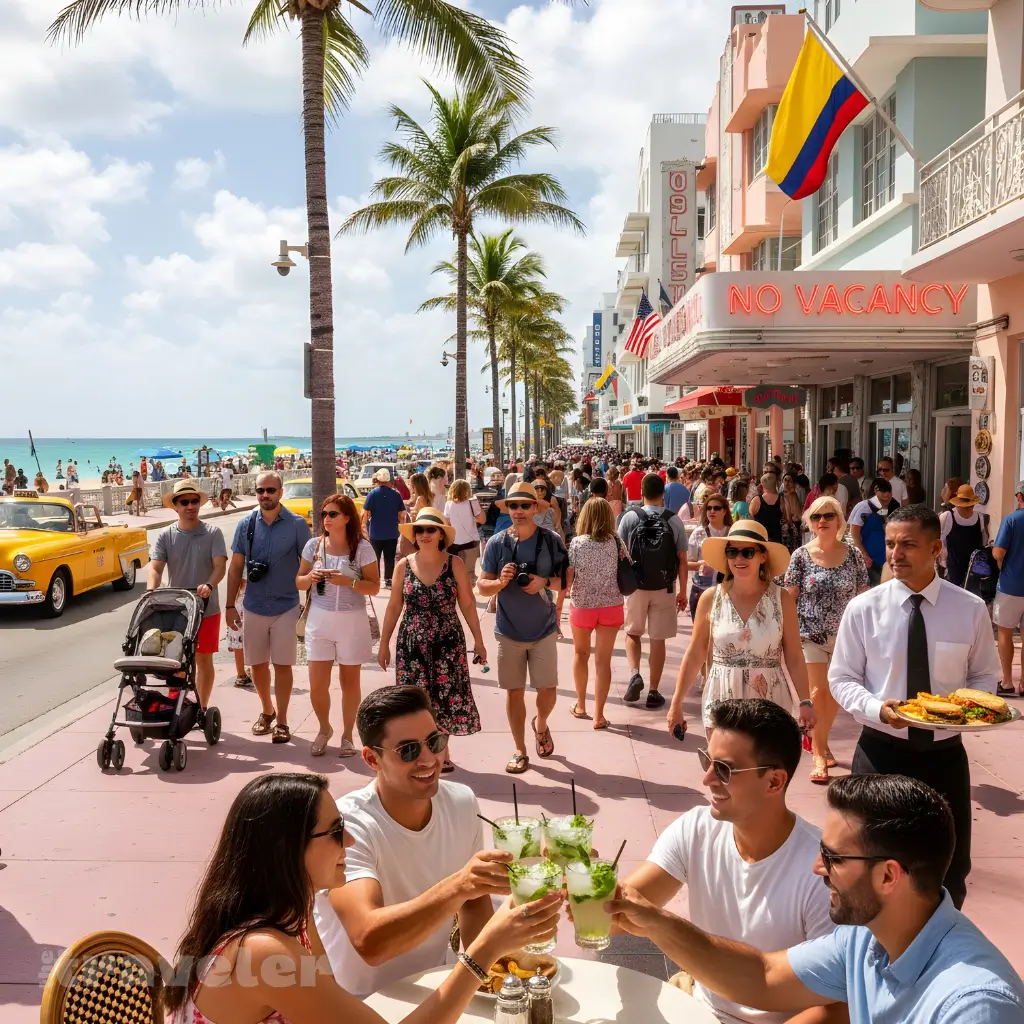
Miami’s tourism boom is both quantifiable and visible. The Greater Miami Convention & Visitors Bureau reports that 2024 saw the highest annual visitor count ever, up roughly 3.9% from the previous year and even surpassing pre-pandemic levels.
This rebound from the pandemic slump has been robust – visitor volumes have climbed more than 16% above 2019’s figures. International travelers flocked back in particular, with Miami seeing over 6.4 million overseas visitors in 2024 (led by countries like Colombia and Brazil) alongside a strong domestic tourism base.
The spending has surged accordingly: visitor expenditures reached $22.0 billion in 2024, a 4% increase from 2023 and over 23% higher than before the pandemic. Put simply, tourists are pouring more dollars into Miami’s hotels, restaurants, shops and attractions than ever. For locals, those numbers aren’t just abstract – they translate into full restaurants in Wynwood, packed nightclubs in Downtown, and sold-out tours in the Everglades.
Each uptick in visitation means a tangible boost for business owners and tax coffers alike. The tourism dollars flowing in have an outsized impact: in 2024 the visitor economy accounted for roughly 9% of Miami-Dade County’s entire GDP , underscoring just how central tourism is to the region’s financial health.
Jobs Created by Tourism Across Sectors
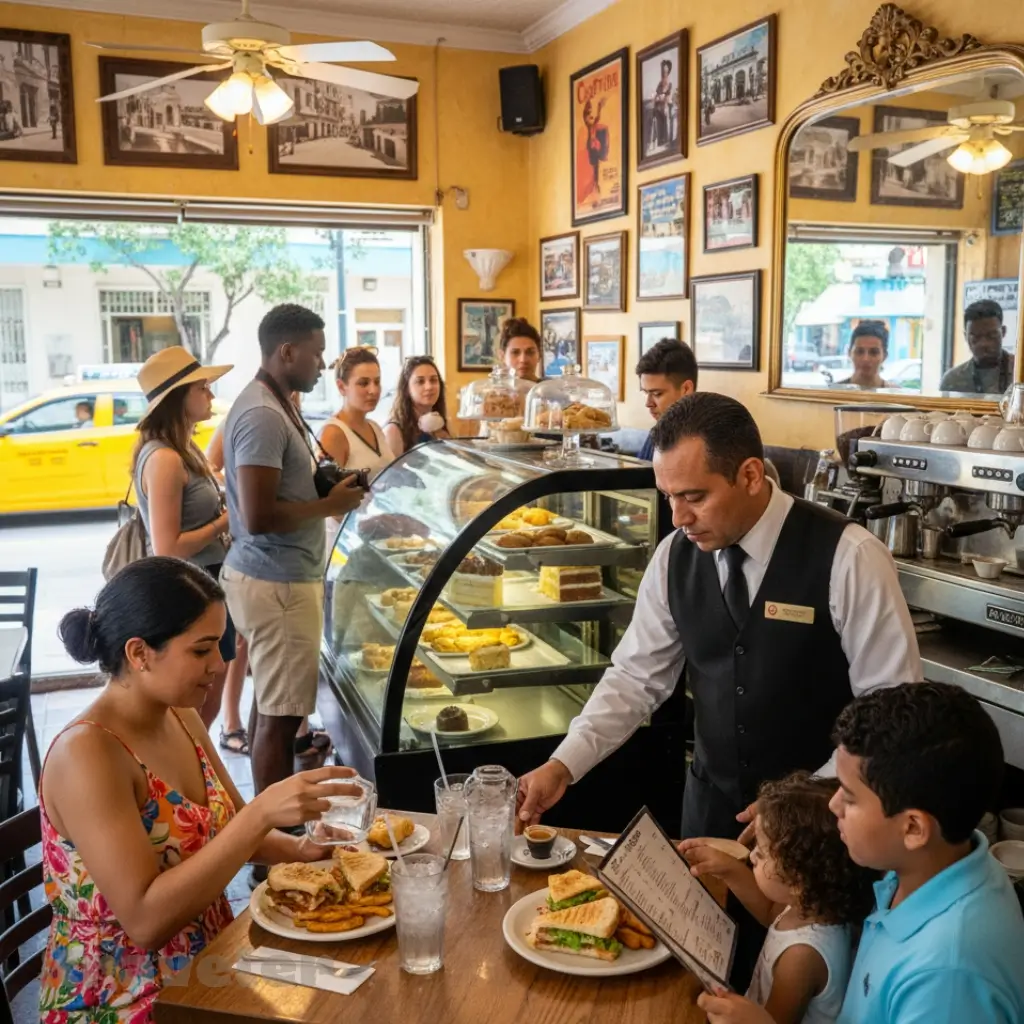
One of the most profound ways tourism powers Miami’s economy is through job creation. The hospitality and tourism sector is a major employer of local residents – in fact, it’s estimated that tourism supports over 209,000 jobs in Miami-Dade, the highest number to date. That equates to about 10% of all employment in the county , meaning roughly one in ten Miami workers depend on tourism for their livelihood.
These aren’t only hotel concierges and beach resort staff; tourism-generated jobs span a wide range of sectors. They include the taxi drivers and rideshare chauffeurs shuttling visitors from the airport, the chefs and waitstaff in restaurants serving up Cuban sandwiches and stone crabs, the tour guides at Vizcaya and Little Havana, the retail clerks on Lincoln Road, and the countless event planners, artists, and entertainers who cater to visitor experiences.
All told, tourism-related employment in Miami generated about $11 billion in wages in 2024 – real income flowing into local households. A full hotel or a busy cruise ship doesn’t just signify visitor spending; it means hundreds of Miamians working: housekeepers, front-desk agents, longshoremen, shop owners and more. During peak season, hotels often staff up with extra hires and restaurants extend hours to meet demand, directly translating visitor volume into paychecks.
This employment engine has a multiplier effect too. Those 209,000 tourism workers spend their earnings locally on housing, groceries, and services, further stimulating Miami’s economy. Little wonder the tourism industry is regarded as the region’s economic lifeblood, with officials noting that roughly 136 visitors create one local job, illustrating how vital every plane arrival and cruise docking is for employment (a ratio that Miami tourism authorities often cite).
PortMiami: The Cruise Capital Global Role
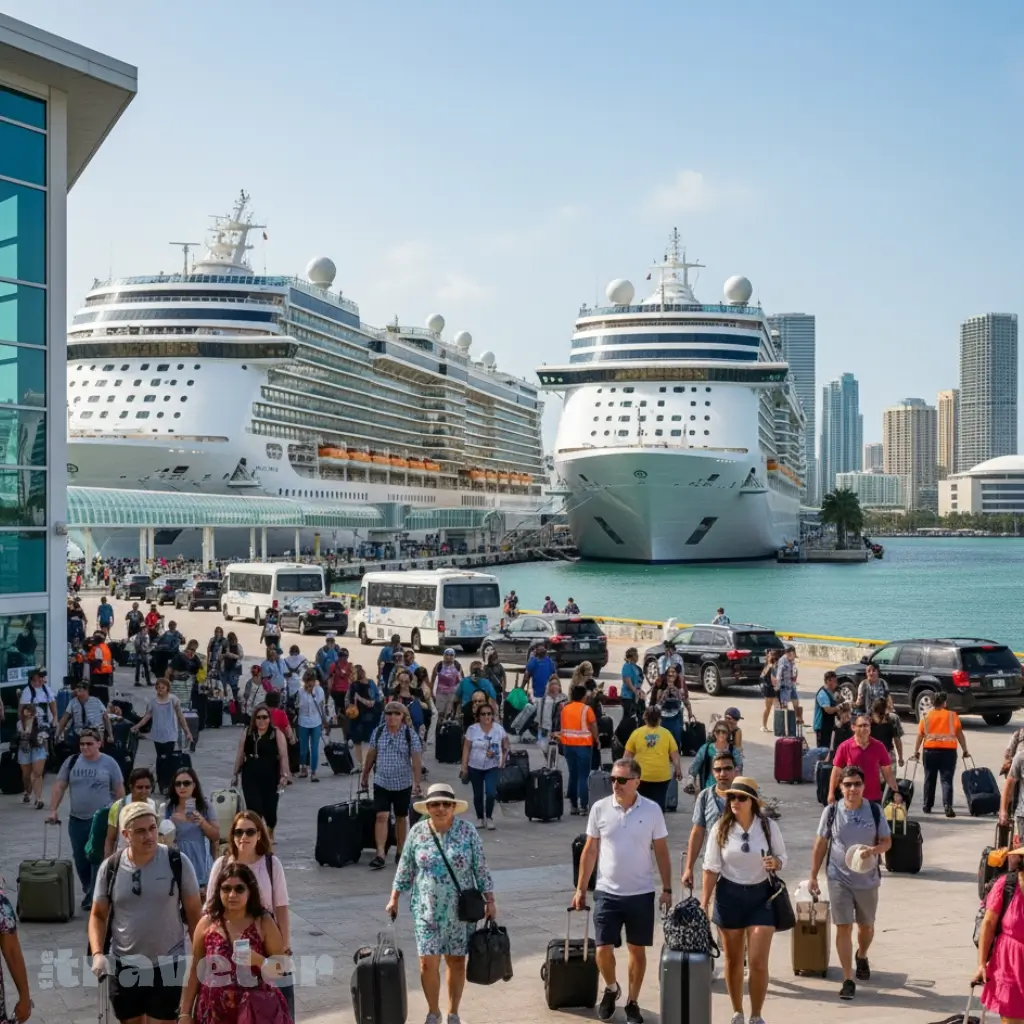
If Miami Beach is the city’s playground, then PortMiami is its grand gateway. Often dubbed the “Cruise Capital of the World,” PortMiami handles more cruise passengers than any port on the planet – and 2024 cemented that status. In the fiscal year 2024, PortMiami saw a record 8.23 million cruise passengers pass through its terminals.
This was a stunning 12.8% jump over the previous year’s record, reflecting the global cruise industry’s roaring return and Miami’s key place in it. To put those numbers in perspective, on some peak days when multiple mega-ships are in harbor, over 67,000 travelers can flood through PortMiami in a single day. Those days are instantly felt in the city: downtown streets swell with rolling suitcases, Bayside Marketplace teems with cruise-goers on pre-voyage shopping sprees, and tour buses line up to give throngs of visitors a whirlwind taste of Miami before they set sail.
The cruise port’s impact extends well beyond its docks. Many passengers fly into Miami just to begin their cruise – in 2024 about 766,000 travelers arrived via Miami International Airport specifically to embark on cruises – often staying in hotels for a night or two before or after their journeys. That means more bookings for local hotels, more dinner reservations at local restaurants, and spikes in demand for taxis and Ubers.
PortMiami’s cruise operations directly create thousands of jobs (from porters and customs officers to ship provisioning crews) and indirectly support many more across hospitality and transportation. It’s hard to overstate the port’s global role: Miami is essentially the hub of the worldwide cruise industry, home to headquarters of major cruise lines and the launching point for millions of travelers’ vacations.
This not only bolsters the economy – with the mayor noting the port “bolstered our economy” and transformed the skyline – but also continually raises Miami’s international profile, as cruise passengers return home with Miami as the first or last memory of their trip.
Impact on Small Businesses and Local Services
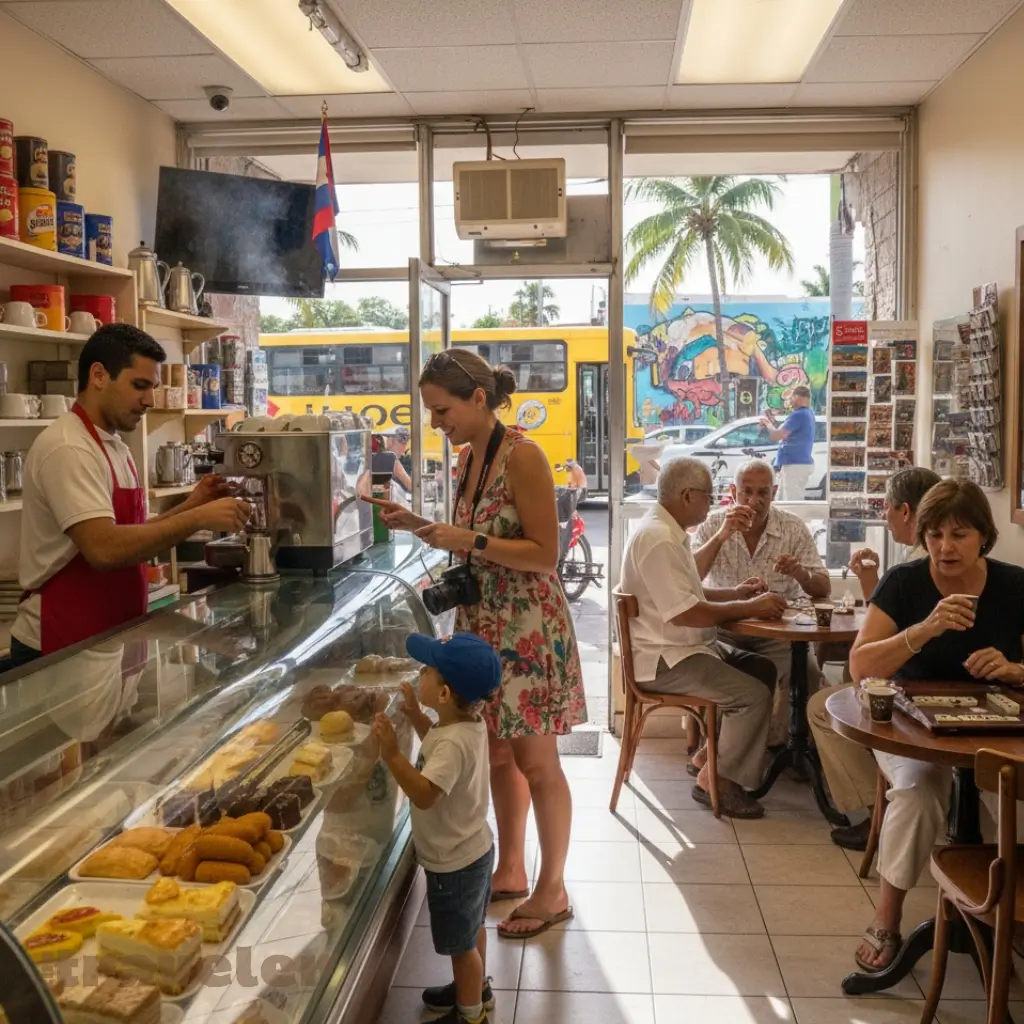
Tourism’s bounty in Miami isn’t confined to big businesses or corporate hotels; it reaches deep into the community, powering small enterprises and public services alike. Stroll through neighborhoods like Little Havana, Wynwood, or Coconut Grove, and you’ll find how visitor spending sustains countless mom-and-pop shops, galleries, cafes, and tour companies.
A family-run Cuban bakery in Little Havana might do brisk business each morning thanks to a tour bus of visitors eager to try a cortadito coffee. In Wynwood, art studios and souvenir boutiques thrive on foot traffic from tourists exploring the murals. Even outside the usual tourist hotspots, ride-share drivers, convenience store owners, and local musicians all benefit when out-of-towners swell the city’s population. The Greater Miami Convention & Visitors Bureau (GMCVB) has made a point to integrate these smaller players into the tourism ecosystem.
Through its Tourism Business Enhancement program, the GMCVB has helped uplift hundreds of multicultural small businesses in heritage neighborhoods, ensuring they can tap into the visitor boom. In the past year alone, this program supported 147 small businesses from minority and immigrant communities, connecting them with training, marketing, and partnership opportunities so they can share in the tourism prosperity. This not only spreads the economic benefits more equitably, but also enhances the visitor experience with more authentic local offerings – a win-win for Miami’s brand and its residents.
Tourism also significantly bolsters local public services and government revenue. Beyond the sales at private businesses, visitor spending yields taxes – hotel bed taxes, sales taxes, restaurant taxes – that flow into public funds. In 2024, tourists generated roughly $2.2 billion in state and local taxes for Miami-Dade. Those funds help pay for everything from parks and beach upkeep to transit services and cultural programs that locals use.
Officials estimate that the tax income from tourists effectively saves each Miami-Dade household around $2,200 a year in taxes they didn’t have to pay because visitors covered the bill. For example, tourism taxes often finance the upkeep of Miami’s beaches, convention centers, and arts venues, as well as marketing efforts that keep the visitors coming. Even essential services like police, fire, and sanitation in busy districts benefit from the influx of outside tax dollars.
In this way, tourism underwrites community well-being: residents enjoy better services and infrastructure, partly thanks to the millions of guests helping foot the bill. Of course, a huge visitor presence also means higher demand on services – more traffic, crowded public spaces, and occasional strains on resources – but Miami has largely embraced this balance, recognizing that the benefits (jobs, taxes, development) far outweigh the costs.
Small businesses, in particular, see tourism as the tide that lifts all boats; during events like Miami Art Week or the Orange Bowl, a surge of tourists can make the difference between a slow quarter or a profitable one for local entrepreneurs.
The Broader Role of Tourism in Miami
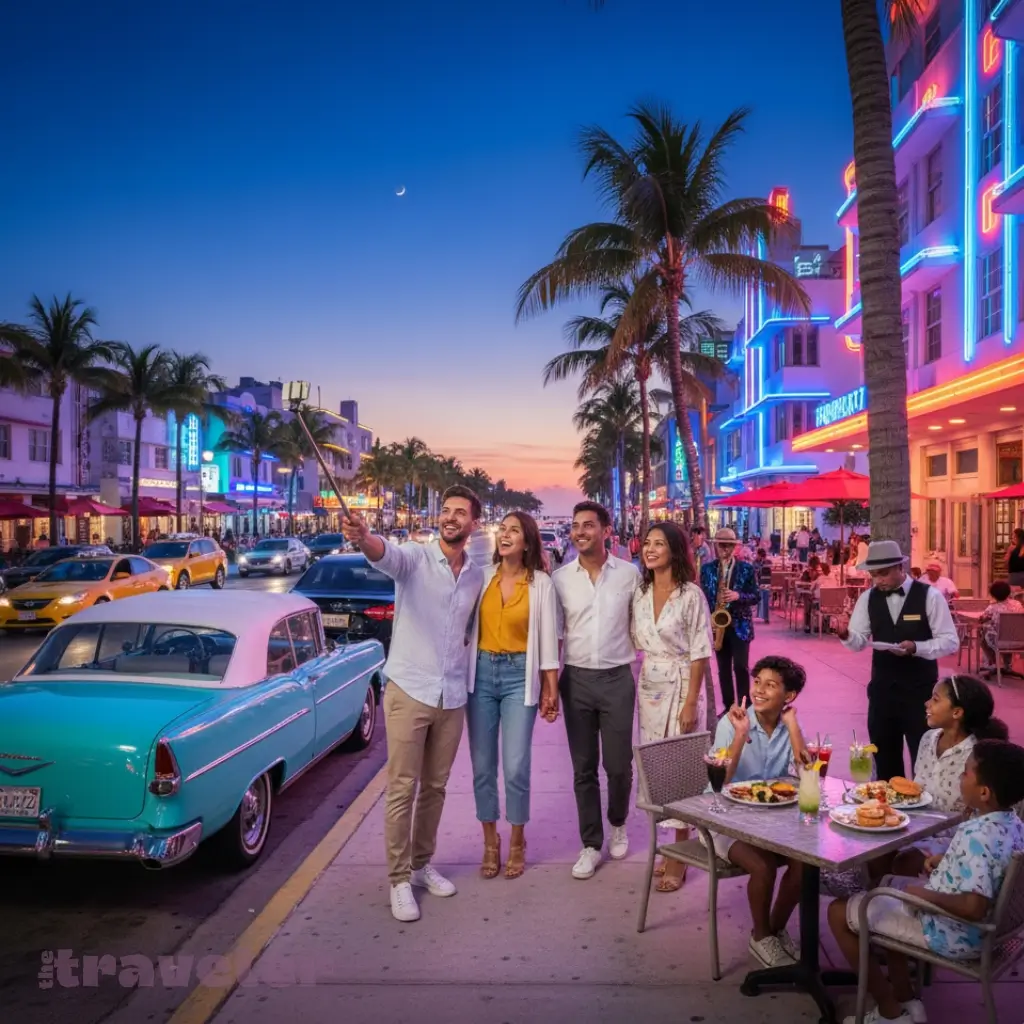
Beyond dollars and cents, tourism is deeply woven into Miami’s identity and global image. From the neon glow of South Beach’s Art Deco District to the colorful carnival of Calle Ocho, many of the symbols people associate with Miami exist because the city has long billed itself as a place for leisure, culture, and hospitality.
For over a century, Miami has been branded as “The Magic City,” a sun-kissed playground where vacation dreams come true – a branding initially born from its explosive growth and warm climate, but continually reinforced by marketing and pop culture. Today, that image is a self-reinforcing cycle: Miami’s allure draws millions of tourists, and the steady stream of visitors encourages the city to further invest in the attractions, events, and vibe that keep the magic alive.
Tourism has encouraged Miami to preserve its unique heritage and celebrate its diversity. The city’s status as an international crossroads – a place where Latin American, Caribbean, and European influences blend – is amplified by the visitors who come to experience that cultural mosaic. Walk through Miami Beach’s famed hotels or the stalls of a weekend arts festival, and you’ll hear Spanish, English, Portuguese, Russian, and beyond. This global mix isn’t just incidental; it’s part of Miami’s character as a world city, shaped by decades of being a top travel destination.
Crucially, tourism shapes local priorities and pride. Miami’s leaders often note that tourism is not just an industry but “our way of life.” It’s no coincidence that the city hosts marquee events like Art Basel, the Miami International Boat Show, and Food and Wine festivals – these draw visitors from around the world while also giving Miami a cosmopolitan flair year-round.
The hospitality mindset spills over into how the city develops: there’s a drive to create welcoming public spaces, world-class museums, and lively entertainment districts, all of which both serve locals and entice tourists. Even Miami’s skyline, dotted with new hotels and cruise ships visible in the harbor, reflects a city oriented toward visitors.
And while Miami’s economy has diversified in recent years (with finance, tech, and health sectors growing), tourism remains the beating heart – contributing an estimated 9% of the county’s GDP and serving as an economic anchor through downturns. In tough times, Miami rallies around tourism because it’s often the fastest path to recovery (as seen after hurricanes or the pandemic, when marketing campaigns ramped up to bring visitors back).
The pride Miamians take in their hometown – from its beaches and nightlife to its cultural heritage – is intertwined with the knowledge that millions come from around the globe to enjoy what Miami offers. That global fascination, in turn, fuels a sense of local pride: being a Miamian means living in a place that others dream of visiting.
FAQ
How many tourists visited Miami in 2024?
A record 28 million, spending $22 billion.
How much tax revenue does tourism generate?
Roughly $2.2 billion in state and local taxes in 2024.
How many jobs depend on tourism in Miami?
About 209,000 jobs, or 10% of all employment in Miami-Dade County.
What makes PortMiami significant?
It’s the world’s busiest cruise port, handling over 8.2 million passengers in 2024.
In sum, tourism powers Miami’s economy in multifaceted ways – by driving record visitor spending and tax revenues, by supporting a broad workforce across many industries, by maintaining Miami’s dominance as the world’s cruise hub, and by uplifting small businesses and community initiatives. It’s the engine behind Miami’s growth and a key ingredient in the city’s vibrant identity.
The next time one strolls through a packed Miami Beach hotel lobby or a bustling Bayside Marketplace, it’s clear that those crowds are more than vacationers – they are the lifeblood of the Magic City, sustaining the economy and spirit of Miami for residents and travelers alike.
